In order to implement the important instructions of President Xi Jinping on carrying forward agricultural civilization, developing various functions of agriculture, and exploring the diverse values of rural areas, the China Green Food Development Center solicited an Agricultural Products Memory Index Catalogue nationwide. On June 20, 2024, the application for “Menghai Tea” submitted by the Menghai County Tea and Green Food Industry Development Center was successfully included in the Agricultural Products Memory Index Catalogue.
Agricultural Characteristics and Heritage

The origins of Menghai Tea can be traced back thousands of years. During this time, the Dai, Hani, Bulang, and Lahu ancestors living in Menghai began cultivating tea. These ancestors used traditional tea garden cultivation methods to plant tea trees around their homes. Over the course of centuries, starting in 1939, they began to develop tea gardens, selecting excellent domestic tea tree varieties and using scientific methods. They adopted terrace-style single-row planting and, from 1990, began using asexual propagation (cutting) techniques. Throughout its history, Menghai Tea has maintained its traditional tea garden characteristics. Traditional cultivation methods have been used to protect the soil, reduce the use of chemical fertilizers and pesticides, and improve ecological balance, making the tea garden ecosystem more stable and healthy.
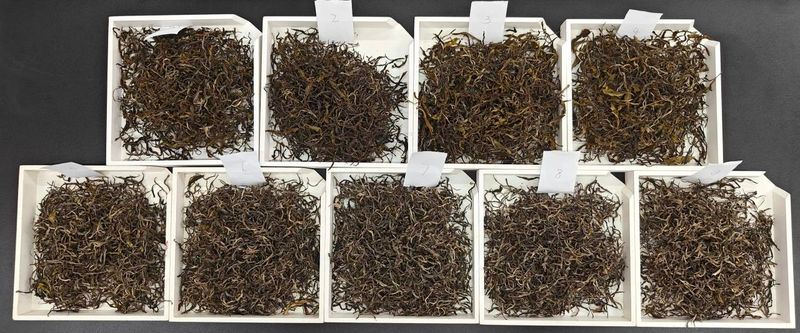
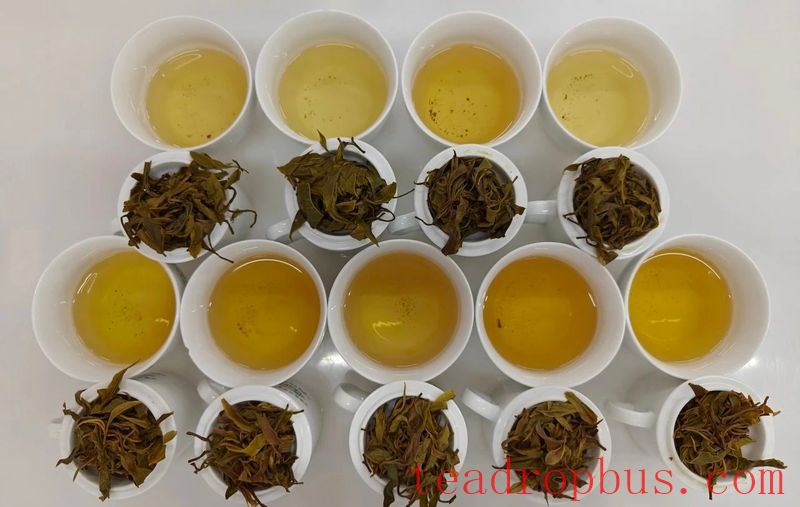

Menghai Tea Characteristics
The leaves are slightly upwardly inclined, with an oval shape, a slightly concave leaf body, a slightly raised leaf surface, a sharply pointed tip, slightly thick flesh, softer texture, greenish-yellow color, and coarse, shallow teeth. The buds and leaves are yellow-green, with an abundance of downy hair, and the shape is upright and uniform, neither too loose nor too tight. The tea strands are clearly visible, with an even distribution (or no distribution at all), smooth surface and edges (brick-shaped), no peeling or delamination, and a dark green or plain green color. The inner quality of new tea has a fresh or floral aroma, a strong taste, a bright yellow-green infusion color, and soft, uniform leaves after Steeping. Its aroma is rich and lingering, the infusion clear and bright, the taste mellow and sweet, becoming even more translucent and vivid over time, with a purer, richer, and more refreshing flavor. The aged aroma is distinct and long-lasting.
Measuring Basic Data of Ancient Tea Trees
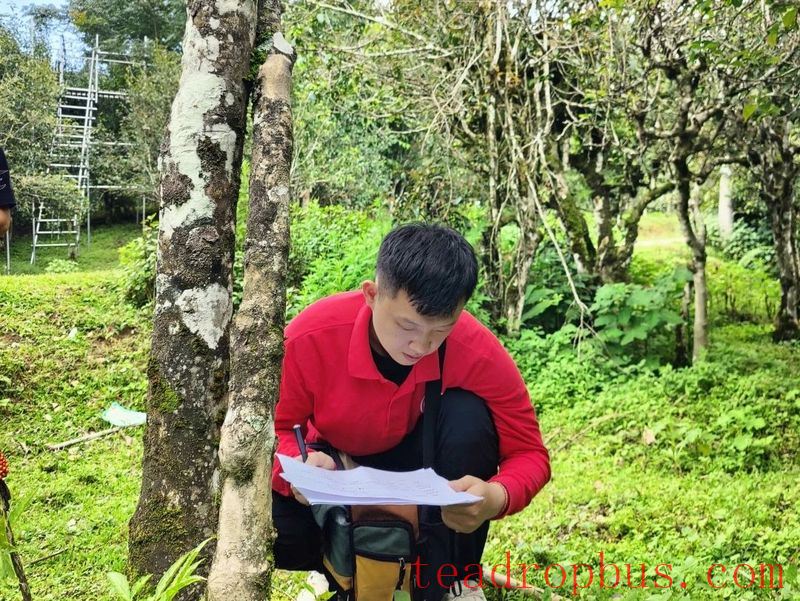
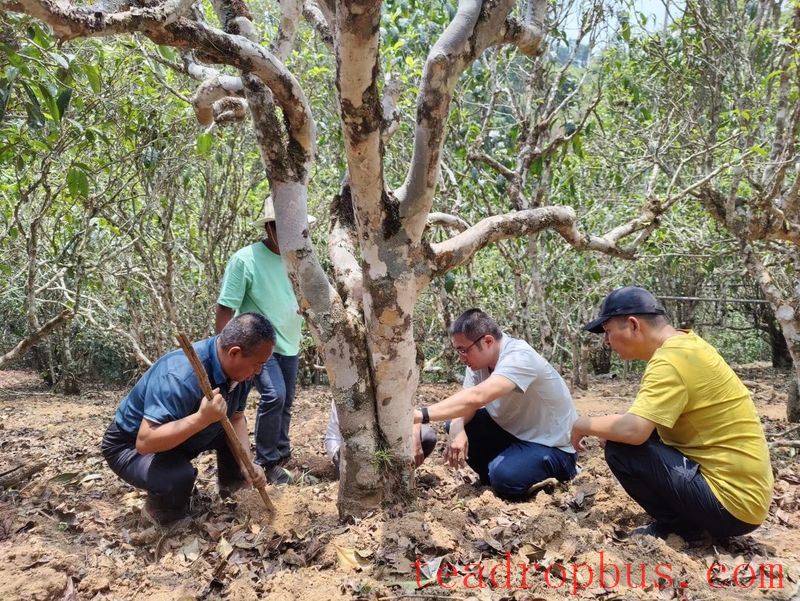 Checking and Maintaining the Base of Tea Tree Trunks
Checking and Maintaining the Base of Tea Tree Trunks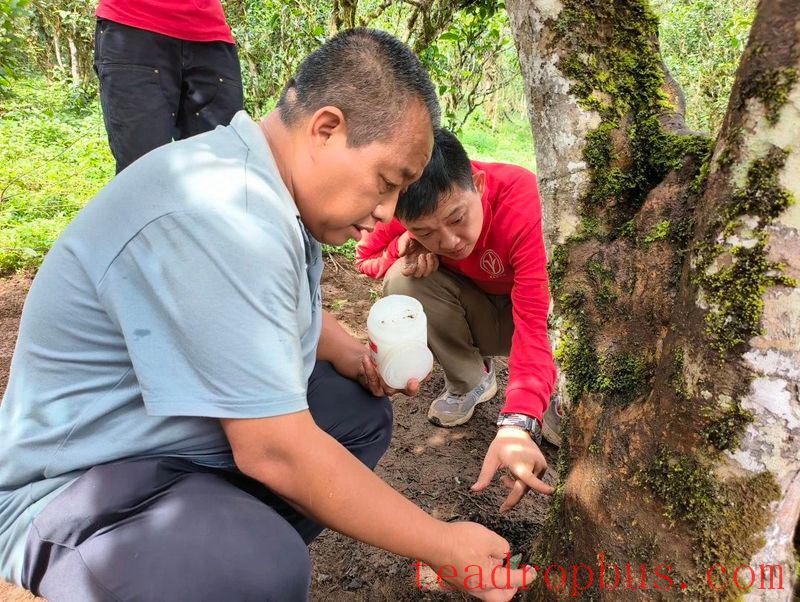
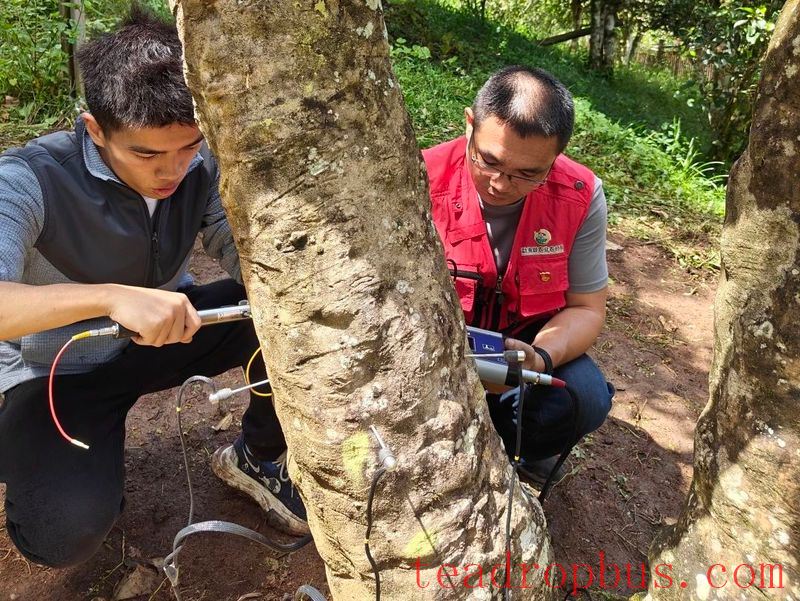
Source: Menghai County Tea and Green Food Industry Development Center, Ding Zhiwei, Wang Juan
Image Source: County Photographers Association, Menghai County Tea and Green Food Industry Development Center